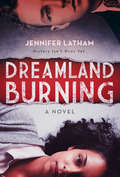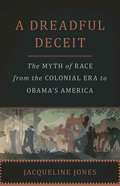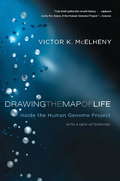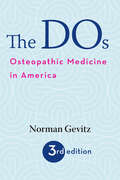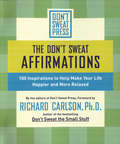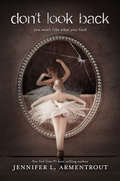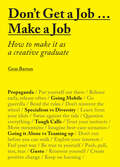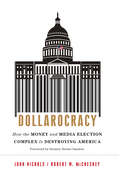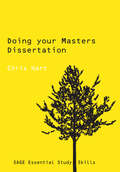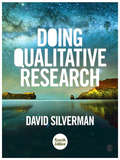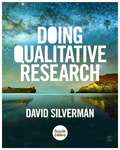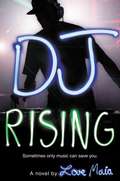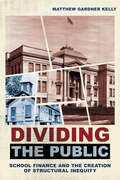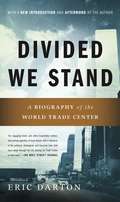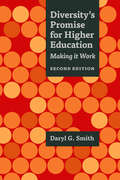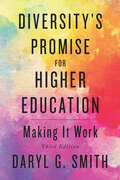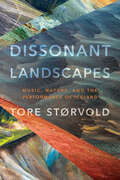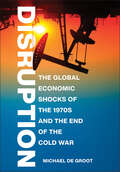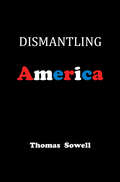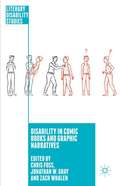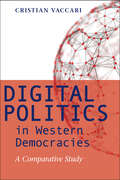- Table View
- List View
Dreamland Burning
by Jennifer LathamA compelling dual-narrated tale from Jennifer Latham that questions how far we've come with race relations.Some bodies won't stay buried.Some stories need to be told. When seventeen-year-old Rowan Chase finds a skeleton on her family's property, she has no idea that investigating the brutal century-old murder will lead to a summer of painful discoveries about the present and the past.Nearly one hundred years earlier, a misguided violent encounter propels seventeen-year-old Will Tillman into a racial firestorm. In a country rife with violence against blacks and a hometown segregated by Jim Crow, Will must make hard choices on a painful journey towards self discovery and face his inner demons in order to do what's right the night Tulsa burns.Through intricately interwoven alternating perspectives, Jennifer Latham's lightning-paced page-turner brings the Tulsa race riot of 1921 to blazing life and raises important questions about the complex state of US race relations--both yesterday and today.
A Dreadful Deceit: The Myth of Race from the Colonial Era to Obama's America
by Jacqueline JonesIn 1656, a planter in colonial Maryland tortured and killed one of his slaves, an Angolan man named Antonio who refused to work the fields. Over three centuries later, a Detroit labor organizer named Simon Owens watched as strikebreakers wielding bats and lead pipes beat his fellow autoworkers for protesting their inhumane working conditions. Antonio and Owens had nothing in common but the color of their skin and the economic injustices they battled-yet the former is what defines them in America’s consciousness. In A Dreadful Deceit, award-winning historian Jacqueline Jones traces the lives of these two men and four other African Americans to reveal how the concept of race has obscured the factors that truly divide and unite us. Expansive, visionary, and provocative, A Dreadful Deceit explodes the pernicious fiction that has shaped American history.
Drawing the Map of Life: Inside the Human Genome Project (A Merloyd Lawrence Book)
by Victor K. McElhenyDrawing the Map of Life is the dramatic story of the Human Genome Project from its origins, through the race to order the 3 billion subunits of DNA, to the surprises emerging as scientists seek to exploit the molecule of heredity. It's the first account to deal in depth with the intellectual roots of the project, the motivations that drove it, and the hype that often masked genuine triumphs.Distinguished science journalist Victor McElheny offers vivid, insightful profiles of key people, such as David Botstein, Eric Lander, Francis Collins, James Watson, Michael Hunkapiller, and Craig Venter. McElheny also shows that the Human Genome Project is a striking example of how new techniques (such as restriction enzymes and sequencing methods) often arrive first, shaping the questions scientists then ask.Drawing on years of original interviews and reporting in the inner circles of biological science, Drawing the Map of Life is the definitive, up-to-date story of today's greatest scientific quest. No one who wishes to understand genome mapping and how it is transforming our lives can afford to miss this book.
The DOs: Osteopathic Medicine in America
by Norman GevitzOvercoming suspicion, ridicule, and outright opposition from the American Medical Association, the osteopathic medical profession today serves the health needs of more than thirty million Americans. Osteopathic medicine is now the fastest-growing segment of the US physician and surgeon population. In The DOs, historian Norman Gevitz chronicles the development of this controversial medical movement from its nineteenth-century origins in the American Midwest to the present day. He describes the philosophy and practice of osteopathy, as well as the impact of osteopathic medicine on health care.In print continuously since 1982, The DOs has now been thoroughly updated and expanded. From the theories underlying the use of spinal manipulation developed by osteopathy's founder, Andrew Taylor Still, Gevitz traces the movement's early success, despite attacks from the orthodox medical community. He also recounts the efforts of osteopathic medical colleges to achieve parity with institutions granting MD degrees and looks at the continuing effort by osteopathic physicians and surgeons to achieve greater recognition and visibility.Bringing additional light to the philosophical origins and practices of the osteopathic movement, as well as the historic debates about which degree to offer its graduates, this volume ;€¢ chronicles the challenges the profession has faced in the early decades of the twenty-first century ;€¢ addresses recent challenges to the osteopathic medical profession;€¢ explores efforts at preserving osteopathy's autonomy and distinctiveness;€¢ offers a new perspective on the future of osteopathic medicine Based on an extensive examination and evaluation of primary sources, as well as countless interviews with individuals both inside and outside osteopathic medicine, The DOs is the definitive history of the osteopathic medical profession.
The DOs: Osteopathic Medicine in America
by Norman GevitzOvercoming suspicion, ridicule, and outright opposition from the American Medical Association, the osteopathic medical profession today serves the health needs of more than thirty million Americans. Osteopathic medicine is now the fastest-growing segment of the US physician and surgeon population. In The DOs, historian Norman Gevitz chronicles the development of this controversial medical movement from its nineteenth-century origins in the American Midwest to the present day. He describes the philosophy and practice of osteopathy, as well as the impact of osteopathic medicine on health care.In print continuously since 1982, The DOs has now been thoroughly updated and expanded. From the theories underlying the use of spinal manipulation developed by osteopathy's founder, Andrew Taylor Still, Gevitz traces the movement's early success, despite attacks from the orthodox medical community. He also recounts the efforts of osteopathic medical colleges to achieve parity with institutions granting MD degrees and looks at the continuing effort by osteopathic physicians and surgeons to achieve greater recognition and visibility.Bringing additional light to the philosophical origins and practices of the osteopathic movement, as well as the historic debates about which degree to offer its graduates, this volume ;€¢ chronicles the challenges the profession has faced in the early decades of the twenty-first century ;€¢ addresses recent challenges to the osteopathic medical profession;€¢ explores efforts at preserving osteopathy's autonomy and distinctiveness;€¢ offers a new perspective on the future of osteopathic medicine Based on an extensive examination and evaluation of primary sources, as well as countless interviews with individuals both inside and outside osteopathic medicine, The DOs is the definitive history of the osteopathic medical profession.
The Don't Sweat Affirmations: 100 Inspirations to Help Make Your Life Happier and More Relaxed
by Richard Carlson100 affirmations that reinforce the don't sweat philosophy of life: that not letting the little things get to you is a great way to reduce stress overall. These peaceful, beautifully written affirmations are simple statements that hold a big impact. Readers who repeat only several affirmations a day will find their lives becoming more calm and less frantic immediately.
Don't Look Back (Don't Look Back Ser.)
by Jennifer L. ArmentroutSamantha is a stranger in her own life. Until the night she disappeared with her best friend, Cassie, everyone said Sam had it all???popularity, wealth, and a dream boyfriend. Sam has resurfaced, but she has no recollection of who she was or what happened to her that night. As she tries to piece together her life from before, she realizes it's one she no longer wants any part of. The old Sam took "mean girl" to a whole new level, and it's clear she and Cassie were more like best enemies. Sam is pretty sure that losing her memories is like winning the lottery. She's getting a second chance at being a better daughter, sister, and friend, and she's falling hard for Carson Ortiz, a boy who has always looked out for her???even if the old Sam treated him like trash. But Cassie is still missing, and the facts about what happened to her that night isn't just buried deep inside of Sam's memory???someone else knows, someone who wants to make sure Sam stays quiet. All Sam wants is the truth, and if she can unlock her clouded memories of that fateful night, she can finally move on. But what if not remembering is the only thing keeping Sam alive?
Don't Get a Job...Make a Job: How to make it as a creative graduate
by Gem BartonToo often a design or architecture degree is seen as a means to an end (a job in an established practice). But imagine for one moment that there are no employers, no firms to send your CV to, no interviews to be had – what would you do? How would you forge your own path after graduation?The current economic climate has seen many graduates chasing a finite number of positions. The most ingenious and driven designers have found weird and wonderful ways of making opportunities for themselves, often by applying their skills across the creative disciplines of art, design, architecture and interiors. Knowing what you want from your design career and being able to adapt your strategy to suit is basic and vital – just like in the wild, designers need to evolve.The book celebrates the various strategies that students and graduates are taking to gain exposure, while also including interviews and inspirational advice from those who are now enjoying success as a result of their creative approach to employment.
Dollarocracy: How the Money and Media Election Complex is Destroying America
by John Nichols Robert W McChesneyFresh from the first 10 billion election campaign, two award-winning authors show how unbridled campaign spending defines our politics and, failing a dramatic intervention, signals the end of our democracy.Blending vivid reporting from the 2012 campaign trail and deep perspective from decades covering American and international media and politics, political journalist John Nichols and media critic Robert W. McChesney explain how US elections are becoming controlled, predictable enterprises that are managed by a new class of consultants who wield millions of dollars and define our politics as never before. As the money gets bigger-especially after the Citizens United ruling-and journalism, a core check and balance on the government, declines, American citizens are in danger of becoming less informed and more open to manipulation. With groundbreaking behind-the-scenes reporting and staggering new research on "the money power,” Dollarocracy shows that this new power does not just endanger electoral politics; it is a challenge to the DNA of American democracy itself.
Doing Your Masters Dissertation (1st edition) (PDF)
by Dr Christopher HartDoing Your Masters Dissertation is a practical and comprehensive guide to researching, preparing and writing a dissertation at Masters level. It adopts a well-structured and logical approach, and takes the student through all the stages necessary to complete their research and write a successful dissertation. Key features of the book include: Step-by-step coverage - sections on choosing a topic, research design, methodology and presenting data and writing up An up-to-date list of key reference materials, both printed and electronic Advice on ethical guidelines Information on assessment criteria Student-focused throughout with a broad range of worked examples and guidelines for further reading. Written in an engaging and accessible manner, this textbook is an essential resource for postgraduate students across the social sciences required to complete a Masters dissertation. SAGE Study Skills are essential study guides for students of all levels. From how to write great essays and succeeding at university, to writing your undergraduate dissertation and doing postgraduate research, SAGE Study Skills help you get the best from your time at university. Visit the SAGE Study Skills website for tips, quizzes and videos on study success!
Doing Your Masters Dissertation (1st edition)
by Dr Christopher HartDoing Your Masters Dissertation is a practical and comprehensive guide to researching, preparing and writing a dissertation at Masters level. It adopts a well-structured and logical approach, and takes the student through all the stages necessary to complete their research and write a successful dissertation. Key features of the book include: Step-by-step coverage - sections on choosing a topic, research design, methodology and presenting data and writing up An up-to-date list of key reference materials, both printed and electronic Advice on ethical guidelines Information on assessment criteria Student-focused throughout with a broad range of worked examples and guidelines for further reading. Written in an engaging and accessible manner, this textbook is an essential resource for postgraduate students across the social sciences required to complete a Masters dissertation. SAGE Study Skills are essential study guides for students of all levels. From how to write great essays and succeeding at university, to writing your undergraduate dissertation and doing postgraduate research, SAGE Study Skills help you get the best from your time at university. Visit the SAGE Study Skills website for tips, quizzes and videos on study success!
Doing Qualitative Research: A Practical Handbook (4th edition)
by Professor David SilvermanIn the fourth edition of his best-selling textbook, David Silverman provides a step-by-step guide to planning and conducting qualitative research. Using real examples from real postgraduate students, the book makes it easy to link theory to methods and shows how to move from understanding the principles of qualitative research to doing it yourself. The new edition has been fully updated and now includes: - a brand new chapter on formulating a research question appropriate for qualitative research - an expanded discussion of the role of theory in research - extended discussion of case study research and the number of cases needed for effective qualitative research - further coverage of focus groups and analysing internet data - new student examples from around the world - a new section on the common pitfalls encountered in qualitative research - an expanded companion website with more student examples and videos. Filled with exercises to test your understanding and develop your skills, as well as David's own tips for research success based on years of experience, this book is essential reading for anyone doing qualitative research. Available with Perusall--an eBook that makes it easier to prepare for class Perusall is an award-winning eBook platform featuring social annotation tools that allow students and instructors to collaboratively mark up and discuss their SAGE textbook. Backed by research and supported by technological innovations developed at Harvard University, this process of learning through collaborative annotation keeps your students engaged and makes teaching easier and more effective. Learn more.
Doing Qualitative Research: A Practical Handbook (4th ediction) (PDF)
by Professor David SilvermanIn the fourth edition of his best-selling textbook, David Silverman provides a step-by-step guide to planning and conducting qualitative research. Using real examples from real postgraduate students, the book makes it easy to link theory to methods and shows how to move from understanding the principles of qualitative research to doing it yourself. The new edition has been fully updated and now includes: - a brand new chapter on formulating a research question appropriate for qualitative research - an expanded discussion of the role of theory in research - extended discussion of case study research and the number of cases needed for effective qualitative research - further coverage of focus groups and analysing internet data - new student examples from around the world - a new section on the common pitfalls encountered in qualitative research - an expanded companion website with more student examples and videos. Filled with exercises to test your understanding and develop your skills, as well as David's own tips for research success based on years of experience, this book is essential reading for anyone doing qualitative research. Available with Perusall--an eBook that makes it easier to prepare for class Perusall is an award-winning eBook platform featuring social annotation tools that allow students and instructors to collaboratively mark up and discuss their SAGE textbook. Backed by research and supported by technological innovations developed at Harvard University, this process of learning through collaborative annotation keeps your students engaged and makes teaching easier and more effective. Learn more.
DJ Rising
by Love MaiaThe first thing I hear is music. The first thing I've always heard is music.Meet Marley, an unassuming high school junior who breathes in music like oxygen. In between caring for his heroin-addicted mother, and keeping his scholarship at a fancy prep school, he dreams of becoming a professional DJ.When chance lands Marley his first real DJ job, his career as "DJ Ice" suddenly skyrockets. But when heart-rending disaster at home brings Marley crashing back down to earth, he is torn between obligation and following his dreams.
Dividing the Public: School Finance and the Creation of Structural Inequity (Histories of American Education)
by Matthew Gardner KellyIn Dividing the Public, Matthew Gardner Kelly takes aim at the racial and economic disparities that characterize public education funding in the United States. With California as his focus, Kelly illustrates that the use of local taxes to fund public education was never an inadvertent or de facto product of past practices, but an intentional decision adopted in place of well-known alternatives during the Progressive Era, against past precedent and principle in several states.From efforts to convert expropriated Indigenous and Mexican land into common school funding in the 1850s, to reforms that directed state aid to expanding white suburbs during the years surrounding World War II, Dividing the Public traces, in intricate detail, how a host of policies connected to school funding have divided California by race and class over time. In bringing into view the neglected and poorly understood history of policymaking connected to school finance, Kelly offers a new story about the role public education played in shaping the racially segregated, economically divided, and politically fragmented world of the post-1945 metropolis.
Divided We Stand: A Biography Of New York's World Trade Center
by Eric DartonWhen the World Trade Towers in New York City were erected at the Hudson's edge, they led the way to a real estate boom that was truly astonishing. Divided We Stand reveals the coming together and eruption of four volatile elements: super-tall buildings, financial speculation, globalization, and terrorism. The Trade Center serves as a potent symbol of the disastrous consequences of undemocratic planning and development.This book is a history of that skyscraping ambition and the impact it had on New York and international life. It is a portrait of a building complex that lives at the convergence point of social and economic realities central not only to New York City but to all industrial cities and suburbs. A meticulously researched historical account based on primary documents, Divided We Stand is a contemporary indictment of the prevailing urban order in the spirit of Jane Jacobs's mid-century classic The Death and Life of Great American Cities.
Diversity's Promise for Higher Education: Making It Work
by Daryl G. SmithDaryl G. Smith has devoted her career to studying and fostering diversity in higher education. She has witnessed and encouraged the evolution of diversity from an issue addressed sporadically on college campuses to a reality of the modern university experience. In Diversity’s Promise for Higher Education, Smith brings together scholarly and field research relevant to the next generation of diversity work. The book argues that achieving excellence in a diverse society requires increasing the institutional capacity for diversity while simultaneously working to understand how diversity is tied to better leadership, positive change, research in virtually every field, student success, accountability, and more equitable hiring practices. To become more relevant to society, the nation, and the world while remaining true to their core missions, colleges and universities must continue to see diversityâ€�like technologyâ€�as central, not parallel, to their work. In Diversity’s Promise for Higher Education, Smith proposes a set of clear and realistic practices that will help colleges and universities locate diversity as a strategic imperative and pursue diversity efforts that are inclusive of the variedâ€�and growingâ€�issues apparent on campuses without losing focus on the critical unfinished business of the past.In this edition, which is aimed at administrators, faculty, researchers, and students of higher education, Smith emphasizes a transdisciplinary approach to the topic of diversity, drawing on an updated list of sources from a wealth of literatures and fields. The tables have been refreshed to include data on faculty diversity over a twenty-year period and the book includes new information about gender identity, stereotype threat, student success, the growing role of chief diversity officers, the international emergence of diversity issues, faculty hiring, and implicit bias.
Diversity's Promise for Higher Education: Making It Work
by Daryl G. SmithDaryl G. Smith has devoted her career to studying and fostering diversity in higher education. She has witnessed and encouraged the evolution of diversity from an issue addressed sporadically on college campuses to a reality of the modern university experience. In Diversity’s Promise for Higher Education, Smith brings together scholarly and field research relevant to the next generation of diversity work. The book argues that achieving excellence in a diverse society requires increasing the institutional capacity for diversity while simultaneously working to understand how diversity is tied to better leadership, positive change, research in virtually every field, student success, accountability, and more equitable hiring practices. To become more relevant to society, the nation, and the world while remaining true to their core missions, colleges and universities must continue to see diversityâ€�like technologyâ€�as central, not parallel, to their work. In Diversity’s Promise for Higher Education, Smith proposes a set of clear and realistic practices that will help colleges and universities locate diversity as a strategic imperative and pursue diversity efforts that are inclusive of the variedâ€�and growingâ€�issues apparent on campuses without losing focus on the critical unfinished business of the past.In this edition, which is aimed at administrators, faculty, researchers, and students of higher education, Smith emphasizes a transdisciplinary approach to the topic of diversity, drawing on an updated list of sources from a wealth of literatures and fields. The tables have been refreshed to include data on faculty diversity over a twenty-year period and the book includes new information about gender identity, stereotype threat, student success, the growing role of chief diversity officers, the international emergence of diversity issues, faculty hiring, and implicit bias.
Diversity's Promise for Higher Education: Making It Work
by Daryl G. SmithDaryl G. Smith has devoted her career to studying and fostering diversity in higher education. In Diversity's Promise for Higher Education, Smith brings together research from a wide variety of fields to propose a set of clear and realistic practices that will help colleges and universities locate diversity as a strategic imperative and pursue diversity efforts that are inclusive of the varied—and growing—issues apparent on campuses without losing focus on the critical unfinished business of the past.To become more relevant to society, the nation, and the world, while remaining true to their core missions, colleges and universities must continue to see diversity—like technology—as central, not parallel, to their work. Indeed, looking at the relatively slow progress for change in many areas, Smith suggests that seeing diversity as an imperative for an institution's individual mission, and not just as a value, is the necessary lever for real institutional change. Furthermore, achieving excellence in a diverse society requires increasing institutional capacity for diversity—working to understand how diversity is tied to better leadership, positive change, research in virtually every field, student success, accountability, and more equitable hiring practices. In this edition, which is aimed at administrators, faculty, researchers, and students of higher education, Smith emphasizes a transdisciplinary approach to the topic of diversity, drawing on an updated list of sources from a wealth of literatures and fields. The tables and figures have been refreshed to include data on faculty diversity over a twenty-year period, and the book includes new information about • gender identity,• embedded bias,• student success,• the growing role of chief diversity officers,• the international emergence of diversity issues,• faculty hiring,• and important metrics for monitoring progress.Drawing on forty years of diversity studies, this third edition also • includes more examples of how diversity is core to institutional excellence, academic achievement, and leadership development;• updates issues of language;• examines the current climate of race-based campus protest;• addresses the complexity of identity—and explains how to attend to the growing kinds of identities relevant to diversity, equity, and inclusion while not overshadowing the unfinished business of race, class, and gender.
Diversity's Promise for Higher Education: Making It Work
by Daryl G. SmithDaryl G. Smith has devoted her career to studying and fostering diversity in higher education. In Diversity's Promise for Higher Education, Smith brings together research from a wide variety of fields to propose a set of clear and realistic practices that will help colleges and universities locate diversity as a strategic imperative and pursue diversity efforts that are inclusive of the varied—and growing—issues apparent on campuses without losing focus on the critical unfinished business of the past.To become more relevant to society, the nation, and the world, while remaining true to their core missions, colleges and universities must continue to see diversity—like technology—as central, not parallel, to their work. Indeed, looking at the relatively slow progress for change in many areas, Smith suggests that seeing diversity as an imperative for an institution's individual mission, and not just as a value, is the necessary lever for real institutional change. Furthermore, achieving excellence in a diverse society requires increasing institutional capacity for diversity—working to understand how diversity is tied to better leadership, positive change, research in virtually every field, student success, accountability, and more equitable hiring practices. In this edition, which is aimed at administrators, faculty, researchers, and students of higher education, Smith emphasizes a transdisciplinary approach to the topic of diversity, drawing on an updated list of sources from a wealth of literatures and fields. The tables and figures have been refreshed to include data on faculty diversity over a twenty-year period, and the book includes new information about • gender identity,• embedded bias,• student success,• the growing role of chief diversity officers,• the international emergence of diversity issues,• faculty hiring,• and important metrics for monitoring progress.Drawing on forty years of diversity studies, this third edition also • includes more examples of how diversity is core to institutional excellence, academic achievement, and leadership development;• updates issues of language;• examines the current climate of race-based campus protest;• addresses the complexity of identity—and explains how to attend to the growing kinds of identities relevant to diversity, equity, and inclusion while not overshadowing the unfinished business of race, class, and gender.
Dissonant Landscapes: Music, Nature, and the Performance of Iceland (Music / Culture)
by Tore StørvoldDuring the past three decades, Iceland has attained a strong presence in the world through its musical culture, with images of the nation being packaged and shipped out in melodies, harmonies, and rhythms. What 'Iceland' means for people, both at home and abroad, is conditioned by music and its ability to animate notions of nature and nationality. In six chapters that range from discussions of indie rock ballads to 'Nordic noir' television music, Dissonant Landscapes describes the capacity of musical expression to transform ideas about nature and nationality on the northern edges of Europe.
Disruption: The Global Economic Shocks of the 1970s and the End of the Cold War
by Michael De GrootIn Disruption, Michael De Groot argues that the global economic upheaval of the 1970s was decisive in ending the Cold War. Both the West and the Soviet bloc struggled with the slowdown of economic growth; chaos in the international monetary system; inflation; shocks in the commodities markets; and the emergence of offshore financial markets. The superpowers had previously disseminated resources to their allies to enhance their own national security, but the disappearance of postwar conditions during the 1970s forced Washington and Moscow to choose between promoting their own economic interests and supporting their partners in Europe and Asia. De Groot shows that new unexpected macroeconomic imbalances in global capitalism sustained the West during the following decade. Rather than a creditor nation and net exporter, as it had been during the postwar period, the United States became a net importer of capital and goods during the 1980s that helped fund public spending, stimulated economic activity, and lubricated the private sector. The United States could now live beyond its means and continue waging the Cold War, and its allies benefited from access to the booming US market and the strengthened US military umbrella. As Disruption demonstrates, a new symbiotic economic architecture powered the West, but the Eastern European regimes increasingly became a burden to the Soviet Union. They were drowning in debt, and the Kremlin no longer had the resources to rescue them.
Dismantling America: and other controversial essays
by Thomas SowellThese wide-ranging essays—on many individual political, economic, cultural and legal issues—have as a recurring, underlying theme the decline of the values and institutions that have sustained and advanced American society for more than two centuries. This decline has been more than an erosion. It has, in many cases, been a deliberate dismantling of American values and institutions by people convinced that their superior wisdom and virtue must over-ride both the traditions of the country and the will of the people.Whether these essays (originally published as syndicated newspaper columns) are individually about financial bailouts, illegal immigrants, gay marriage, national security, or the Duke University rape case, the underlying concern is about what these very different kinds of things say about the general direction of American society.This larger and longer-lasting question is whether the particular issues discussed reflect a degeneration or dismantling of the America that we once knew and expected to pass on to our children and grandchildren. There are people determined that this country's values, history, laws, traditions and role in the world are fundamentally wrong and must be changed. Such people will not stop dismantling America unless they get stopped—and the next election may be the last time to stop them, before they take the country beyond the point of no return.
Disability In Comic Books And Graphic Narratives (PDF)
by Chris Foss Jonathan W. Gray Zach WhalenAs there has yet to be any substantial scrutiny of the complex confluences a more sustained dialogue between disability studies and comics studies might suggest, Disability in Comic Books and Graphic Narratives aims through its broad range of approaches and focus points to explore this exciting subject in productive and provocative ways. Alternate ISBNs 9781349698981 9781137501110
Digital Politics in Western Democracies: A Comparative Study
by Cristian VaccariDigital politics is shorthand for how internet technologies have fueled the complex interactions between political actors and their constituents. Cristian Vaccari analyzes the presentation and consumption of online politics in seven advanced Western democracies—Australia, France, Germany, Italy, Spain, the United Kingdom, and the United States—from 2006 to 2010. His study not only refutes claims that the web creates homogenized American-style politics and political interaction but also empirically reveals how a nation’s unique constraints and opportunities create digital responses. Digital Politics in Western Democracies is the first large-scale comparative treatment of both the supply and the demand sides of digital politics among different countries and national political actors. It is divided into four parts: theoretical challenges and research methodology; how parties and candidates structure their websites (supply); how citizens use the websites to access campaign information (demand); and how the research results tie back to inequalities, engagement, and competition in digital politics. Because a key aspect of any political system is how its actors and citizens communicate, this book will be invaluable for scholars, students, and practitioners interested in political communication, party competition, party organization, and the study of the contemporary media landscape writ large.
